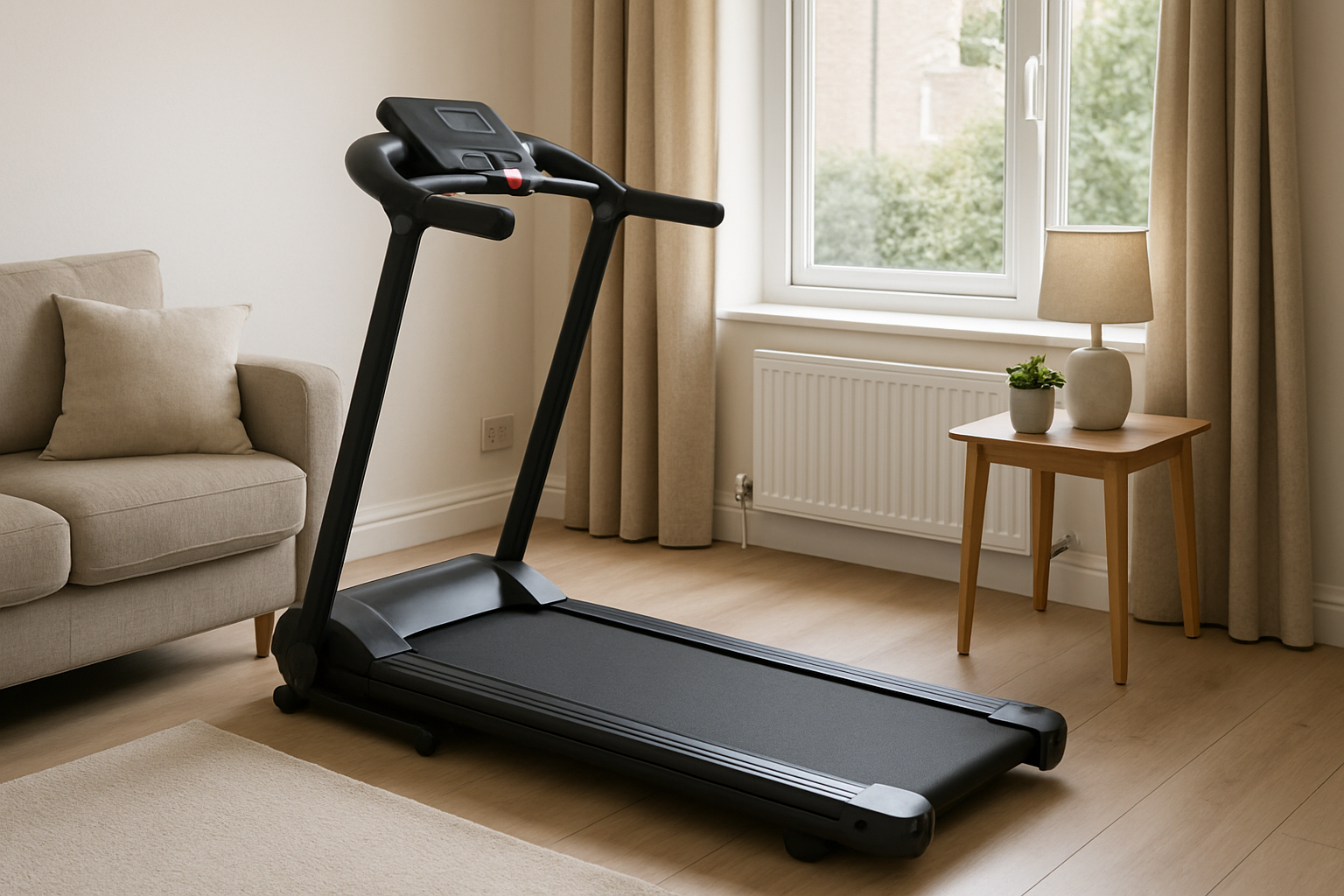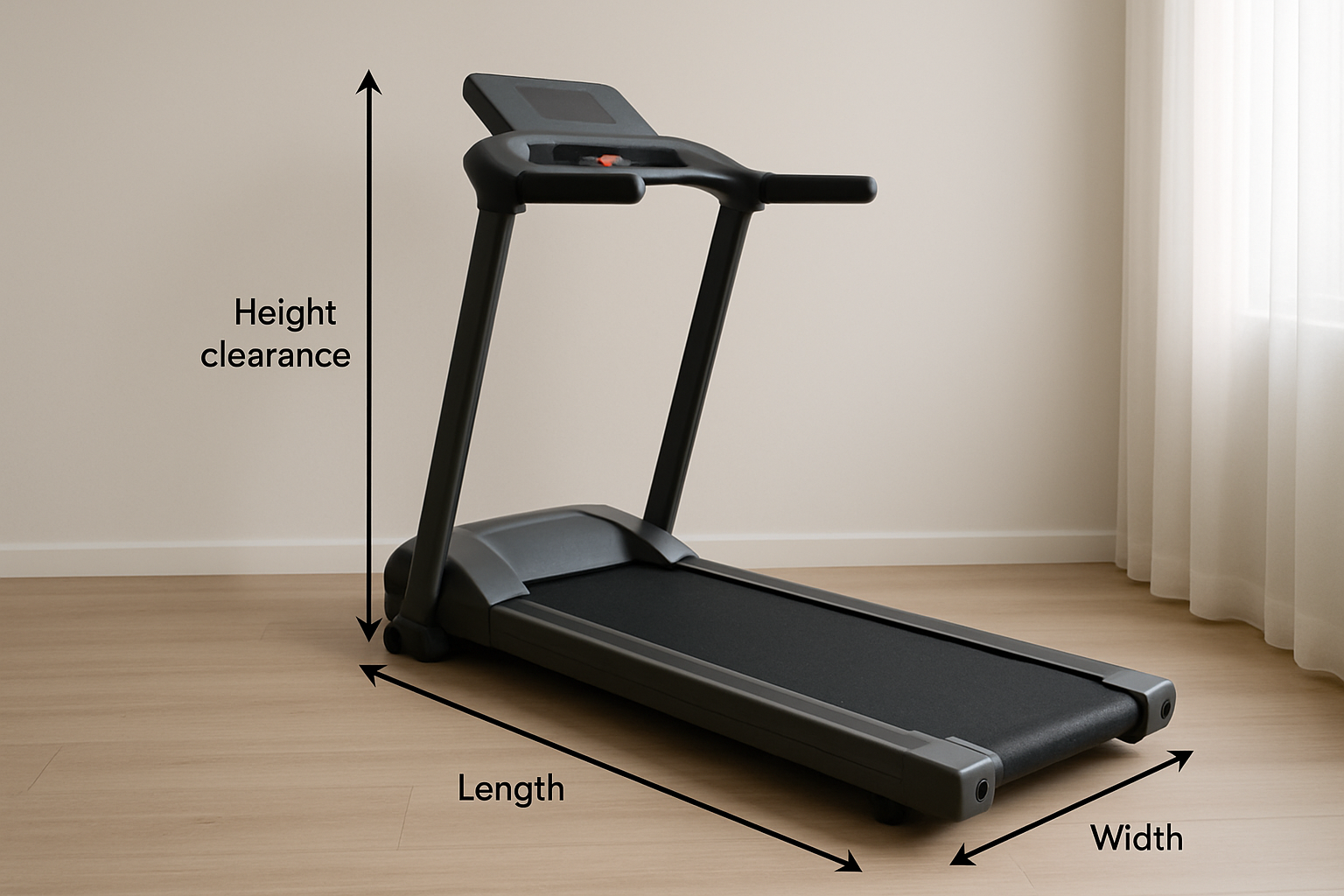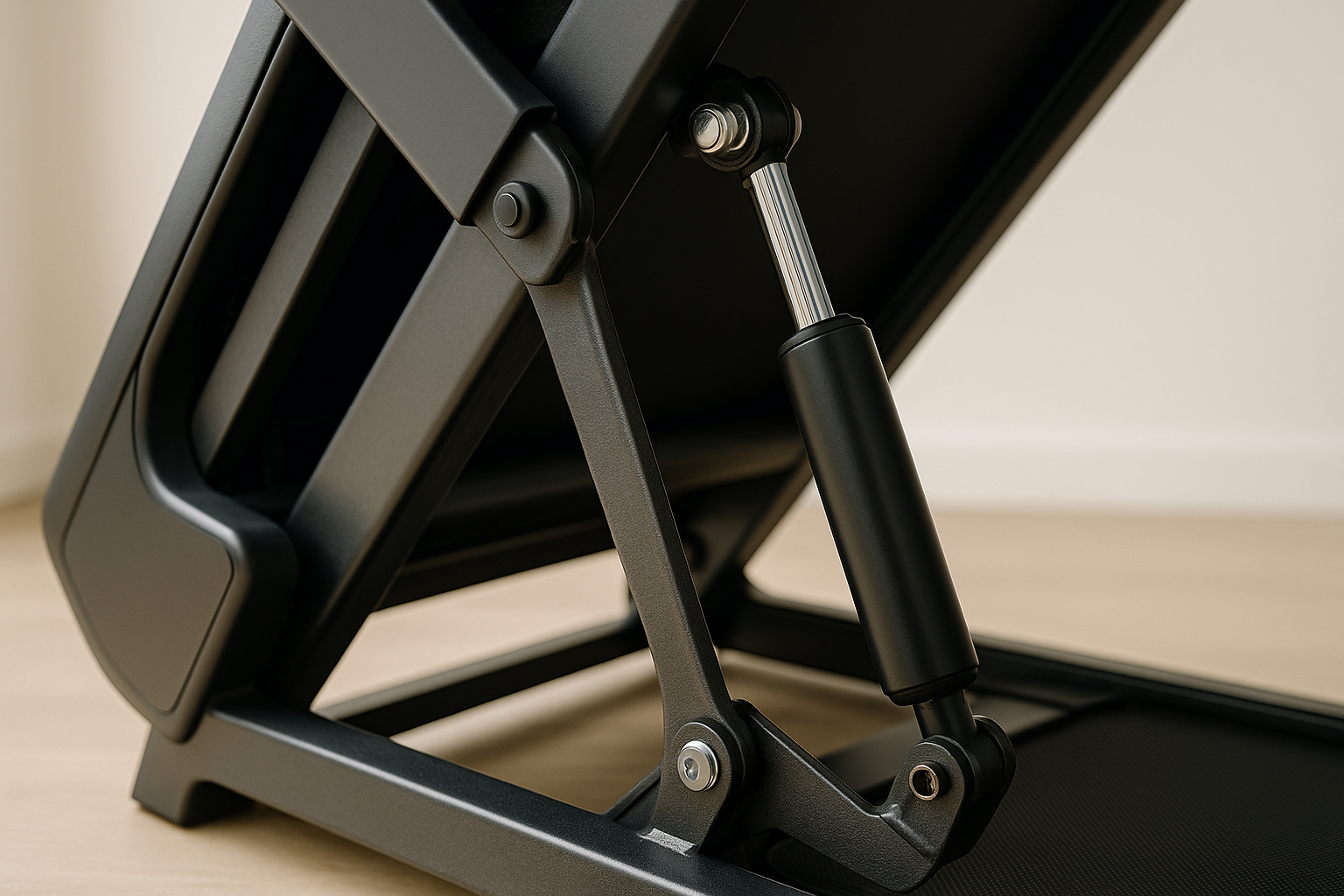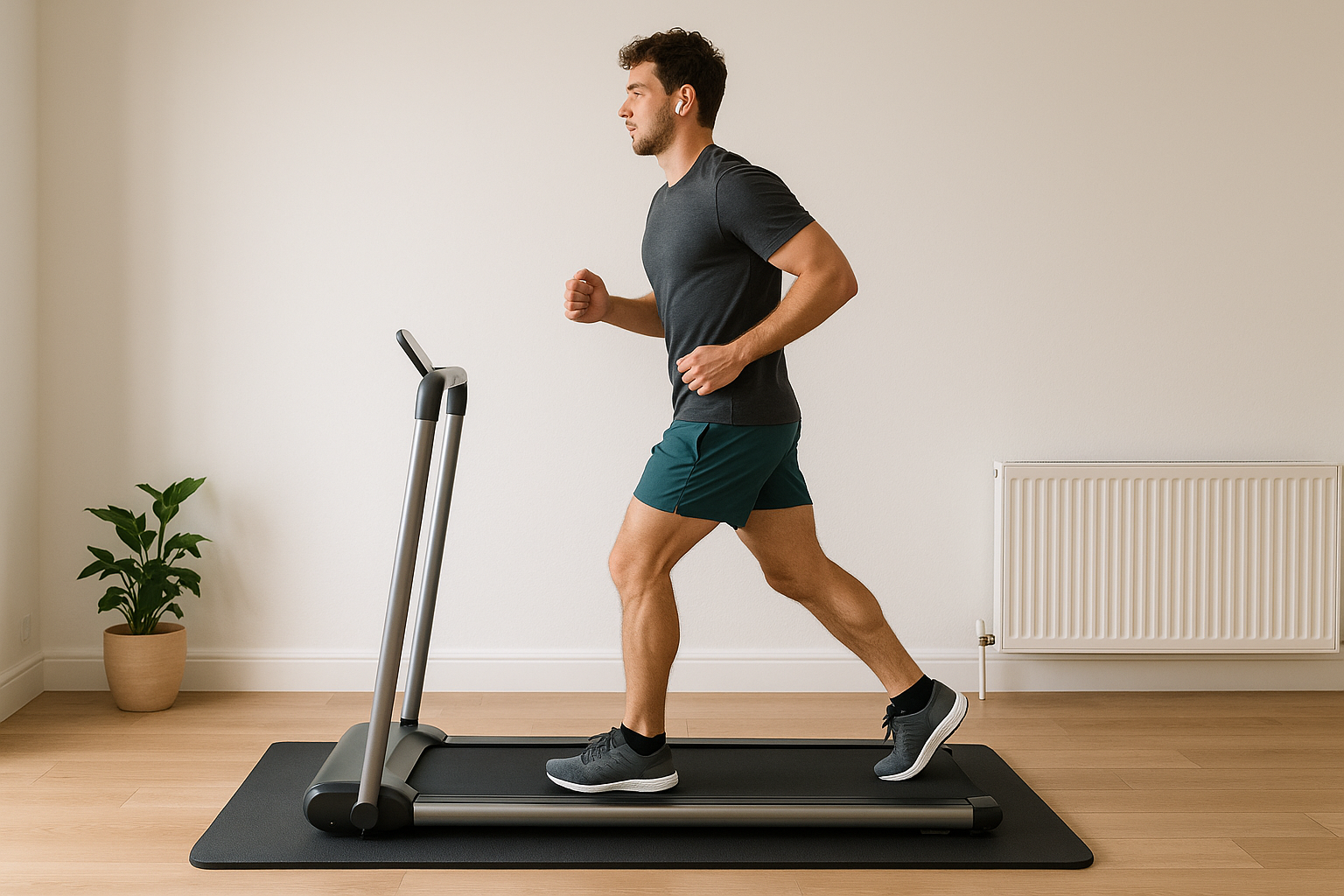Best folding treadmills UK: buyer’s guide 2025
Reading time: 10 minutes
Last updated: September 2025
Best folding treadmills UK: buyer’s guide 2025
If you’re short on space but want reliable indoor cardio, this guide breaks down how to choose from the best folding treadmills UK buyers will find right now. In the next 10 minutes, you’ll learn what specs actually matter (motor, deck size, cushioning), how much room you need in a UK flat, and the trade-offs by budget so you buy once and use it for years.
Quick answers: a 2.0–2.5 CHP motor suits walking/jogging; aim for a 46–50 cm wide belt and 125–140 cm length for comfortable strides; noise is manageable with a mat and good maintenance; and folding mechanisms don’t kill performance—just pick solid frames with decent max user weights.
- Are folding treadmills good for running? Yes—if the deck, motor and frame are up to it. See the checklist below.
- How much space do I need? Typically 170–200 cm L x 75–85 cm W unfolded; 110–140 cm L x 75–85 cm W folded upright. Measure ceiling height too.
- What motor size? 2.0 CHP for walking, 2.5–3.0 CHP for jogging, 3.0+ CHP for regular running or heavier users.
- Are they noisy? Mid-range models are quiet enough for flats when used with a mat, proper lubrication, and good technique.
TL;DR
- Pick belt size first: 46–50 cm width and 125–140 cm length suits most UK users for jogging; taller runners may want 140–150 cm.
- Motor matters: 2.0 CHP (walk), 2.5–3.0 CHP (jog), 3.0+ CHP (run/sprints). Continuous horsepower (CHP) beats peak HP.
- Frame and user weight rating indicate build quality; 120–150 kg max ratings are a good sign.
- Noise control: use a 10–12 mm mat, keep the belt lubricated, and ensure correct belt tension to cut rumble in flats.
- Budget: under £400 (compact walkers), £400–£700 (entry joggers), £700–£1,200 (all-rounders), £1,200+ (runner-grade with better cushioning).
- Check folded footprint and ceiling height; allow 1 m clearance behind and 0.5 m each side.
- For pure low-impact cardio in tiny spaces, consider alternatives like rowers and cross-trainers (see comparison below).

Best folding treadmills UK: what to look for
Use this practical checklist to separate marketing from must-haves.
- Motor (CHP): Continuous horsepower is the honest rating. As a guide: 2.0 CHP (walking/rehab), 2.5–3.0 CHP (jogging 2–4 times/week), 3.0–3.5+ CHP (regular running/intervals, heavier users). Brushless DC motors often run quieter.
- Belt size (deck): Aim for 46–50 cm width and 125–140 cm length if you plan to jog. Taller runners (≥185 cm) or those doing fast intervals benefit from 140–150 cm length.
- Cushioning: Look for multi-zone or elastomer systems to reduce joint load. Good decks feel springy but stable, not bouncy.
- Frame and max user weight: Higher ratings (120–150 kg) and heavier frames usually mean better stability and longevity.
- Speed and incline: 16 km/h is enough for most; 18–20+ km/h for sprint work. 10–15% incline expands training options.
- Noise: Quoted dB figures are rare; instead, look for thicker decks, quality belt material and proper lubrication guidance.
- Folding mechanism: Hydraulic soft-drop prevents slams; a secure locking pin or latch is essential for safety.
- Console and apps: Clear metrics (pace, distance, HR), quick keys for speed/incline, and optional Bluetooth for apps (e.g., Zwift, Kinomap). Offline control should remain usable without subscriptions.
- Safety: Big, accessible stop key; handrails that don’t interfere with natural arm swing.
- Assembly and delivery: Check box size and stair access; some models offer partial pre-assembly.
- Warranty and service: At least 2 years parts and labour; longer on the motor/frame. UK-based service is a plus.
- Power and placement: Standard UK 230 V socket. Leave space behind (≥1 m) for safe dismount.
Common mistakes to avoid
- Choosing by top speed alone—deck size and motor matter more for comfort.
- Ignoring ceiling height—add your standing height plus deck rise plus incline.
- Skimping on a mat—vibration travels through floors, especially in conversions.
- Forgetting service access—folding is great, but you still need space to lube and adjust the belt.
Pro tips
- Prioritise belt width for confidence; 48–50 cm feels noticeably roomier than 42–44 cm for beginners.
- Use quick-access keys for 1 km/h and 1% changes to nail intervals without menu-diving.
- If you’re heavier or plan to run often, buy a stronger frame/motor once—it’s cheaper than replacing a flimsy unit.

Space, noise and home setup
Most folding treadmills for UK homes need around 170–200 cm length and 75–85 cm width when in use. Folded upright, the footprint often drops to 110–140 cm length. Measure:
- Ceiling height: Your standing height + deck height (12–20 cm) + incline rise. Add 5–10 cm safety margin.
- Clearance: 1 m behind the deck, 0.5 m each side, and access to the emergency stop.
- Flooring: A 10–12 mm rubber mat reduces vibration and protects floors.
Noise in flats: The main sources are footstrike vibration, motor hum, and belt friction. Mitigate by placing a dense mat, keeping the belt centred and lubricated, and avoiding heavy heel-striking. If late-night running is an issue, favour incline walking intervals instead.
Budget and value: what you get at each price
Prices are indicative and subject to change.
- Under £400: Best for walking, light jogs. Compact decks (≈40–44 cm x 110–120 cm), 1.5–2.0 CHP motors, limited incline and cushioning. Very small folded footprint.
- £400–£700: Entry-level jogger range. 2.0–2.5 CHP, 44–48 cm x 120–130 cm decks, 10–16 km/h speeds, basic cushioning, manual or modest powered incline.
- £700–£1,200: All-rounders. 2.5–3.0 CHP, 46–50 cm x 125–140 cm decks, 16–20 km/h, 10–15% incline, better damping, stronger frames, app connectivity.
- £1,200+: Runner-grade home units. 3.0–3.5+ CHP, 50 cm x 140–152 cm decks, robust frames, superior cushioning, quieter operation, richer training features.
Performance and comfort: deck, cushioning, speed and incline
Deck feel: You want a stable platform with some give. Too soft = energy loss and wobble; too hard = joint stress. Mid-range and premium decks often use multi-zone elastomers for heel-soft to toe-firm transitions.
Speed: For most beginners, 12–14 km/h covers steady runs; 16 km/h allows tempo sessions; 18–20 km/h supports sprints. Consistent speed under load (no surging) indicates a capable controller and motor.
Incline: 0–10% is ample for hill work and low-impact intensity. Incline walking at 5–10% is an excellent alternative to running when noise or joint stress is a concern.
Stability: Check for deck wobble when you shift laterally and when landing midfoot. A higher max user weight and heavier chassis usually feel steadier.
Glossary
- CHP (Continuous Horsepower): The sustained power a motor can deliver; more meaningful than peak HP.
- Deck: The platform beneath the running belt, which includes the cushioning system.

Who should buy what
- Beginner walkers or rehab: Compact, under £400–£600, 2.0–2.5 CHP, strong handrails, good stop key. Focus on comfort and safety.
- Beginner joggers (2–4 sessions/week): £600–£1,000, 2.5–3.0 CHP, 46–50 cm x 125–140 cm deck, 16 km/h top speed, 10% incline. Balanced choice for small homes.
- Runners and intervals: £1,000+, 3.0+ CHP, 50 cm x 140–150 cm deck, 18–20 km/h, better cushioning, more durable frames.
- Shared households: Prioritise quiet motors, thicker mats, and easy-fold hydraulics. Look for higher user weight ratings.
- Very small spaces: Consider slim under-desk walkers for steps and light cardio, or look at alternatives like rowers/cross-trainers for vertical storage and lower vibration.
If a 5K is your goal, pair your purchase with our structured treadmill 5k training plan.
Setup, maintenance and longevity
- Assembly: Two people make it safer to move and align the deck during setup. Keep the box until testing is complete.
- Lubrication: Silicone lube every 3–6 months (or 40–60 hours of use) unless your manual states otherwise. Apply under the belt evenly.
- Belt tracking: If the belt drifts, use the rear allen bolts in quarter turns as per the manual.
- Fasteners: Re-torque key bolts after 2–4 weeks of use; vibrations can loosen them.
- Cleaning: Wipe sweat from the deck/console; vacuum hair and dust around the belt area monthly.
- Mat: A dense rubber mat reduces vibration and protects floors—especially important in flats.
Pro tips
- Keep a small maintenance log for lubrication dates and adjustments—it helps warranty and resale value.
- Use surge-protected extension leads only if necessary and rated appropriately; avoid cable trip hazards.
Troubleshooting common issues
- Belt slipping underfoot: Increase belt tension slightly (quarter turns) and ensure proper lubrication.
- Belt drift to one side: Adjust the rear roller bolt on the drift side by 1/4 turn, run at 5–6 km/h, then re-check.
- Console won’t power: Check the safety key, socket, power switch and fuse in the plug. Try a different socket.
- Squeaks or rattles: Tighten frame bolts; apply silicone where the deck meets the frame (if recommended); check handrail joints.
- Overheating or speed surges: Stop and cool, check for belt over-tightening, and contact support if it persists.
Alternatives: rower, cross-trainer or bike?
Depending on space, joints and goals, a different cardio machine might suit you better.
Quick comparison
- Rowing machine: Full-body, low-impact, folds/stands vertically; noise is mainly air/fan or water. See our best rowing machines and the in-depth BodyMax Oxbridge HR Air Rowing Machine review.
- Cross-trainer (elliptical): Very low joint impact; good for longer steady sessions; a bigger footprint but quiet. A budget-friendly hybrid is discussed in our JLL CT100 review.
- Exercise bike: Small footprint, quiet, excellent for intervals; seats can be a comfort hurdle—test saddle options.
If you’re planning a multi-purpose setup, see how to build a home gym that fits UK spaces.
Safety, injury prevention and technique
- Warm-up: 5–8 minutes easy walk/jog at 0–2% incline; add 2 x 30-second leg swings each side and ankle rolls.
- Technique cues: Tall posture, relaxed shoulders, slight forward lean from the ankles, short ground contact, land under your centre of mass.
- Progress gradually: Increase weekly volume by ~10% and alternate hard/easy days.
- Recovery: Prioritise sleep and hydration. NHS guidance recommends regular physical activity for health; adults are advised to accumulate at least 150 minutes of moderate-intensity aerobic activity per week, or 75 minutes vigorous, plus strength work twice weekly (NHS; UK CMO guidelines).
- Injury watch-outs: Sudden spikes in speed/incline, excessive heel strike, loose laces. Use the safety key.
Disclaimer: If you have medical conditions, are pregnant, or are new to exercise, consult your GP or a qualified professional before starting a new programme.

FAQs
Are folding treadmills stable enough for running?
Yes—choose 3.0+ CHP motors, 50 cm x 140+ cm decks, and higher max user weights for better stability and longevity.
How much ceiling height do I need?
Add your standing height to the deck height (typically 12–20 cm) and include extra for incline. A 5–10 cm buffer is sensible.
Will a treadmill be too noisy for my flat?
A quality mat, regular lubrication, and smooth technique make most mid-range models acceptable. Consider incline walking if late-night running bothers neighbours.
Do I need subscriptions for app features?
No—basic controls run offline. Subscriptions add guided workouts or scenic routes but are optional.
What’s the difference between CHP and peak HP?
CHP is continuous power the motor can sustain; peak HP is a short burst. Prioritise CHP ratings.
How often should I lubricate the belt?
Typically every 3–6 months or 40–60 hours, unless your manual says otherwise.
Is a compact under‑bed treadmill worth it?
Great for steps and light cardio, but limited for running due to smaller decks and motors.
Verdict
If you want dependable home cardio without sacrificing your living room, a well-chosen folding treadmill is ideal. Prioritise belt size, motor (CHP), frame stability and noise control. Match the model to your training volume and space, and you’ll have a low-maintenance workhorse for years.
Next steps: set your goal and budget, then short‑list models that fit your space. If running a 5K is on your list, follow our treadmill 5k training plan. If you’re still weighing options, compare with rowers in our best rowing machines guide, and see how to build a home gym that fits your space.